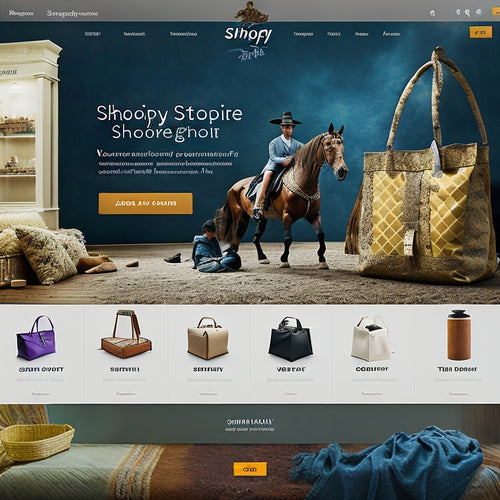
What Does Digital Solution Implementation Really Cost?
Share
You're likely to face a complex array of expenses when implementing a digital solution. Your final bill will depend on factors like pricing structures, scalability requirements, and customization needs. Hidden costs can creep up, too, so it's crucial to plan for contingencies and negotiate contracts carefully. Ongoing maintenance, support, and training expenses will add to your total, and you'll need to take into account the potential ROI and break-even point. To get an accurate estimate, you'll need to crunch the numbers on all these variables. As you delve deeper, you'll uncover more details that will help you create a thorough budget.
Key Takeaways
• Digital solution implementation costs go beyond the initial license fee, considering ongoing maintenance, support, and customization expenses.
• Hidden costs, such as implementation risks, timeline delays, and scope creep, can escalate expenses if not properly mitigated.
• A thorough cost-benefit analysis is crucial to determine the total cost of ownership, including scalability requirements and adaptability.
• Customization and integration fees can add significant expenses, emphasizing the need for clear scope definition and effective vendor negotiation.
• Ongoing expenses, including training, onboarding, and future upgrades, must be factored into the overall cost calculation for a realistic understanding of the implementation cost.
Understanding Digital Solution Pricing
When evaluating digital solutions, you must consider the pricing structures, which can vary greatly depending on factors such as licensing models, deployment options, and scalability requirements. A thorough contract negotiation is important to make sure you get the best deal. This involves a cost-benefit analysis to determine the total cost of ownership and identify areas where you can negotiate better terms.
During vendor selection, a thorough price comparison is necessary to identify the most cost-effective option. You should consider not only the initial licensing fees but also ongoing maintenance costs, support fees, and upgrade expenses. Additionally, you should evaluate the vendor's pricing model, whether it's subscription-based, perpetual licensing, or a hybrid approach.
A detailed comparison of pricing structures will help you make an informed decision. You should also consider the scalability requirements of your organization and how the pricing model will adapt to your growing needs.
Hidden Costs of Implementation
How do you make sure that your digital solution implementation stays within budget when hidden costs can add up quickly?
One of the primary concerns when implementing a digital solution is the risk of unexpected expenses and overlooked costs that can derail your project. These hidden costs can arise from various sources, including changes to the implementation timeline, project delays, or unforeseen technical complexities.
To mitigate these risks, it's crucial to conduct a thorough cost-benefit analysis, identifying potential areas where costs may escalate.
You should also establish clear communication channels with your implementation team to make certain that any changes or issues are addressed promptly.
Additionally, consider allocating a contingency fund to take into account any unexpected expenses that may arise.
Customization and Integration Fees
You'll likely incur customization and integration fees when adapting your digital solution to meet specific business needs or integrating it with existing systems, which can greatly impact your overall implementation cost. These fees can add up quickly, especially if you're working with a vendor that charges by the hour or project scope.
Here's a breakdown of what you can expect:
| Customization and Integration Challenges | Impact on Cost |
|---|---|
| Complex integration with existing systems | High (10-20% of total cost) |
| Custom development for unique business needs | Medium (5-10% of total cost) |
| Vendor negotiations for scope and timeline | Low (2-5% of total cost) |
| Integration with third-party APIs | Medium (5-10% of total cost) |
| Customization scope creep due to timeline constraints | High (10-20% of total cost) |
To minimize these fees, it's crucial to clearly define your customization scope and timeline constraints upfront. This will help you negotiate with vendors more effectively and avoid costly integration challenges down the line.
Ongoing Maintenance and Support
One often disregarded aspect of digital solution implementation cost is the ongoing care and assistance needed to guarantee the system remains stable, secure, and aligned with evolving business needs.
You'll need to take into account the costs of support contracts, which can vary depending on the level of assistance needed. These contracts typically include regular software updates, maintaining your system up-to-date and secure.
Additionally, you'll need to factor in the cost of help desk support, which provides troubleshooting aid when issues arise. This assistance is vital in minimizing downtime and ensuring your system runs smoothly.
When budgeting for ongoing maintenance and support, you should also contemplate the cost of troubleshooting aid. This includes the time and resources required to identify and resolve issues. You may need to hire dedicated staff or outsource to a third-party provider, depending on your organization's size and complexity.
Training and Onboarding Expenses
Your organization's digital solution implementation cost also includes training and onboarding expenses, which encompass the resources needed to guarantee that your team can efficiently and effectively utilize the new system. This involves staff preparation, cost analysis, and allocating sufficient training resources to guarantee a smooth integration.
| Training Component | Time Commitment | Cost Analysis |
|---|---|---|
| Basic System Navigation | 2-3 hours | $500-$1,000 |
| Advanced Feature Training | 4-6 hours | $1,500-$3,000 |
| Customized Workflow Training | 8-10 hours | $3,000-$5,000 |
| Ongoing Support and Refreshers | Ongoing | $1,000-$2,000 per quarter |
When calculating the total cost of training and onboarding, consider the time commitment required from your team and the cost of training resources. This will help you allocate a realistic budget for this critical phase of implementation. A thorough cost analysis will enable you to make informed decisions about the level of training needed to secure your team's success.
Potential ROI and Break-Even Analysis
Calculating the potential return on investment (ROI) and break-even analysis is essential in determining the financial viability of your digital solution implementation, as it helps you quantify the benefits and timeline for recouping your investment.
By calculating benefits, you can identify areas where your digital solution will generate revenue or reduce costs, allowing you to make informed decisions about resource allocation.
This analysis will also help you assess the risk associated with your investment, enabling you to develop strategies to mitigate potential pitfalls.
To conduct a break-even analysis, you'll need to estimate the total costs associated with implementing and maintaining your digital solution. This includes upfront costs, such as software licenses and implementation fees, as well as ongoing expenses like support and maintenance.
By dividing these costs by the expected revenue or cost savings, you can determine the point at which your investment will break even.
This analysis will provide a clear understanding of the financial implications of your digital solution implementation, allowing you to make data-driven decisions and optimize your investment for maximum ROI.
Budgeting for Future Upgrades
As you allocate resources for digital solution implementation, it's important to set aside a budget for future upgrades, ensuring that your system remains scalable, secure, and aligned with evolving business needs. This forward-thinking approach is essential for long-term sustainability and financial forecasting.
| Upgrade Category | Frequency | Budget Allocation |
|---|---|---|
| Security Patches | Quarterly | 10% |
| Feature Enhancements | Bi-Annually | 20% |
| Technology Refresh | Annually | 30% |
| Bug Fixes | Ad-Hoc | 10% |
| Scalability Planning | Quarterly | 30% |
Frequently Asked Questions
Can We Negotiate the Price With the Digital Solution Provider?
You can negotiate the price with the digital solution provider, but be prepared to discuss your budget considerations and justify your requested price adjustments, ensuring a mutually beneficial agreement that meets your needs and theirs.
How Do We Prioritize Features for Phased Implementation?
You're like a master chef, serving up a digital solution in courses; for a successful phased rollout, you prioritize features by ranking them against business objectives, then allocate resources accordingly, ensuring each iteration adds flavor to your overall strategy.
What Is the Ideal Team Size for Implementation Success?
As you assemble your dream team, consider a mix of 8-12 members with diverse skills, ensuring effective team dynamics and resource allocation, and leveraging project management expertise to drive implementation success.
Can We Reuse Existing Infrastructure and Hardware?
As you open the vault of possibilities, you'll find that reusing existing infrastructure and hardware can be a golden key to cost savings, but only if you conduct a thorough infrastructure assessment to reveal its true potential.
Are There Any Penalties for Early Termination?
When negotiating a digital solution contract, you'll want to carefully review early termination consequences and develop strategies to mitigate potential penalties, ensuring you're prepared to exit if needed, without breaking the bank.
Related Posts
-

7 Ways Merchants Can Thrive With Online Courses
You can thrive with online courses by diversifying your revenue streams, building brand authority, and creating a loy...
-

How Do I Promote My Shopify on TikTok
The use of social media platforms for marketing purposes has become increasingly prevalent in recent years. One plat...
-

How to Do Product Bundles on Shopify
Product bundles are a popular strategy for e-commerce businesses to increase sales and customer satisfaction. This a...


